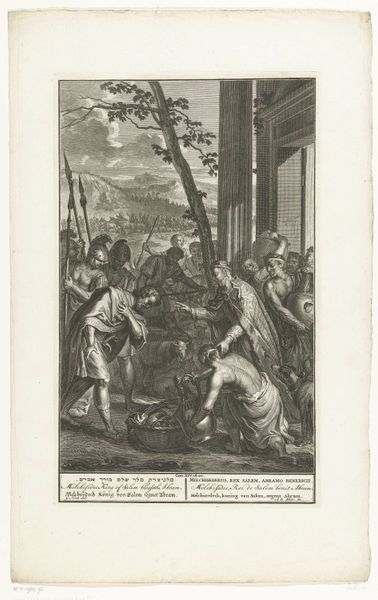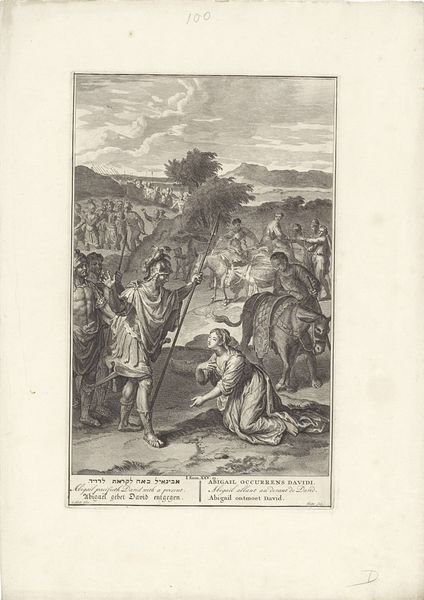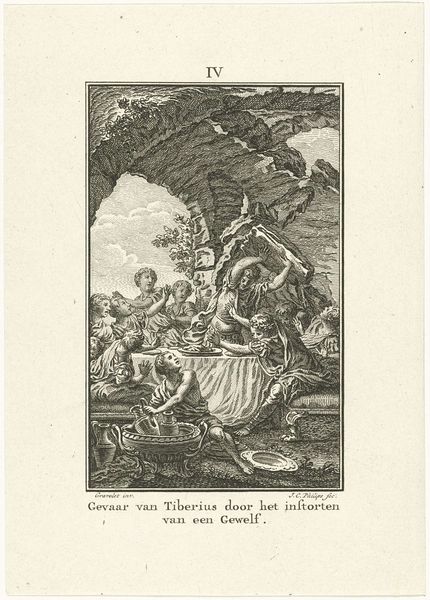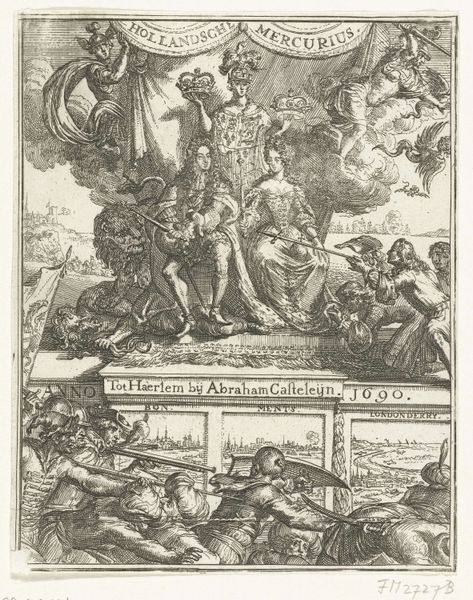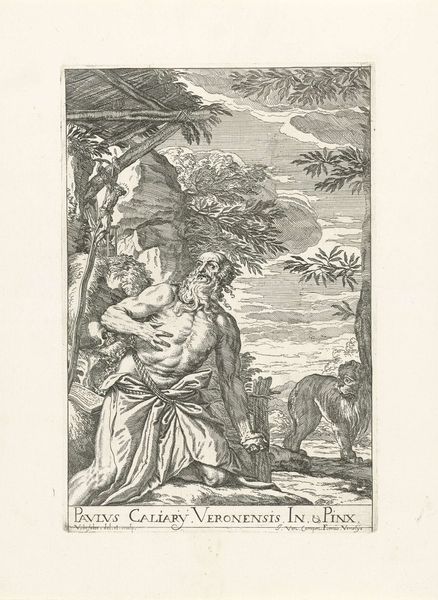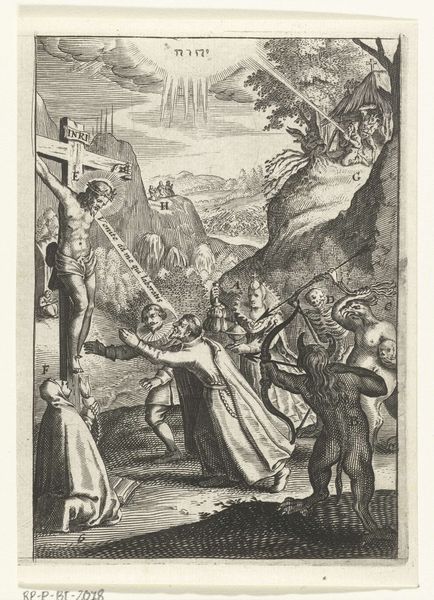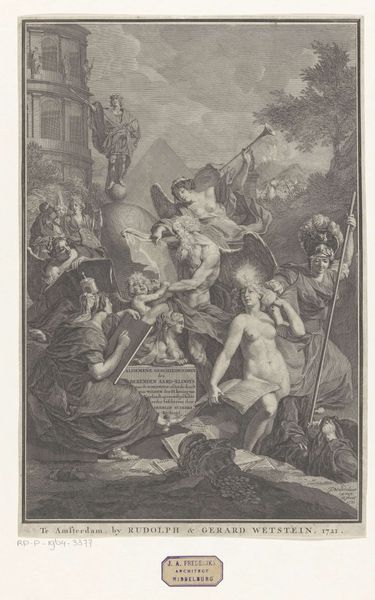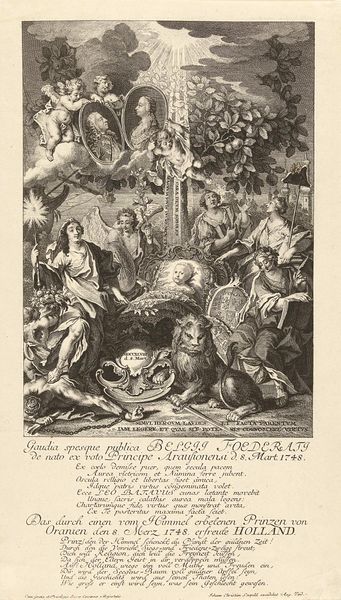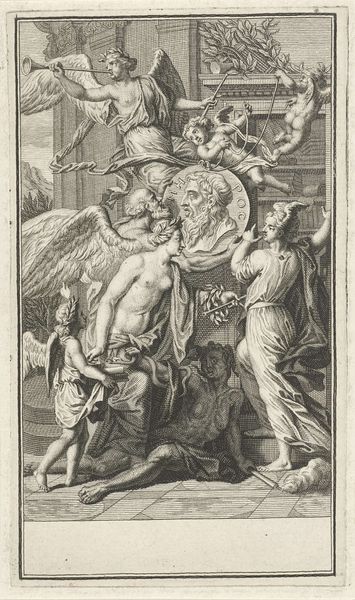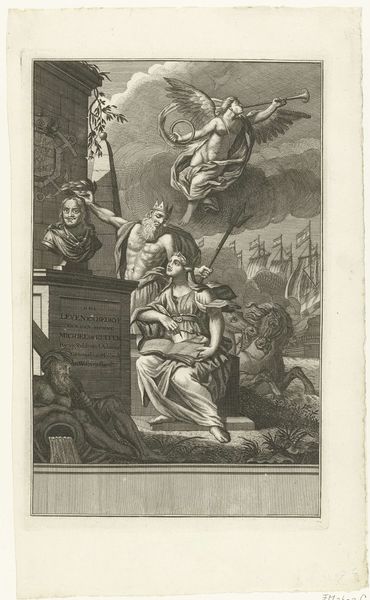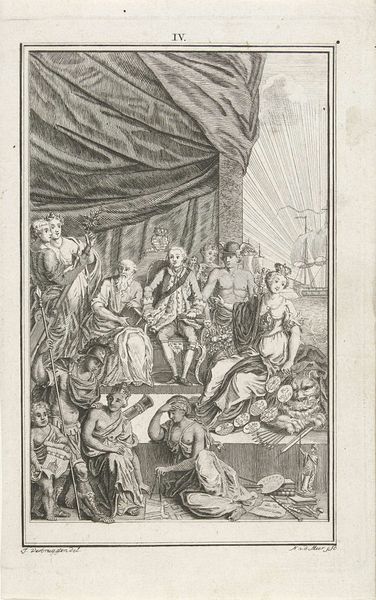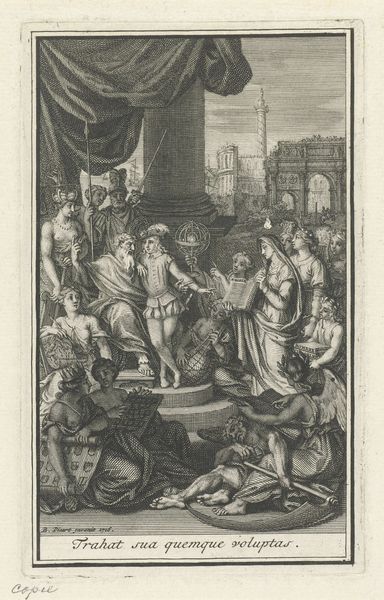
print, engraving
# print
#
landscape
#
figuration
#
history-painting
#
academic-art
#
engraving
Dimensions: height 151 mm, width 115 mm
Copyright: Rijks Museum: Open Domain
Editor: This is "Germanicus probeert zelfmoord te plegen" – Germanicus attempting suicide – an engraving by Jan Caspar Philips, created sometime between 1736 and 1775. It's incredibly detailed, capturing what I assume is a very dramatic moment. What’s your perspective on the materials and the context surrounding its production? Curator: Well, considering this print, think about the engraver's labor. Philips wasn’t just replicating an image; he was interpreting a historical narrative through a highly skilled craft. The very act of engraving, of using a burin to incise lines into a metal plate, speaks to a meticulous, time-consuming process. What does this meticulousness communicate about the subject itself, and the social conditions under which it was made and circulated? Editor: It's like the level of detail elevates the historical event, almost validating its importance through the labor invested. Does that investment connect with the academic style also applied to the print? Curator: Exactly! The academic style wasn't just a matter of aesthetic choice, it was also a conscious alignment with certain intellectual and political ideologies. The print becomes a commodity, consumed by a specific audience interested in history, morality, and even politics. It's not only a product of labour, but also contributes to a cycle of historical, intellectual, and societal production and consumption. Consider how this image might function differently depending on who is buying and displaying it, and what class connotations are being projected here. Editor: So, the material is as important as the scene represented. Curator: Precisely. And examining the means of production, the materiality itself, helps us to deconstruct the myth surrounding the event and view it as a product of its time. I didn’t realize how labor and material influence how we receive these types of prints. Editor: Thanks, now when I look at this, I think more about what the artist invested when making it.
Comments
No comments
Be the first to comment and join the conversation on the ultimate creative platform.

